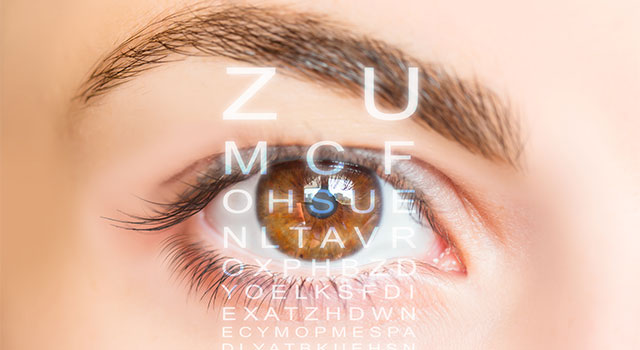Recognizing the Numerous Eye Conditions Treated by Specialized Eye Treatment Professionals
In the realm of eye treatment, specialized professionals play a critical role in diagnosing and dealing with a wide range of eye problems. As we begin on this expedition of the different eye conditions addressed by specialized eye care professionals, it comes to be obvious that the elaborate web of eye health and wellness holds a myriad of remarkable insights waiting to be revealed.
Common Refractive Errors
Refractive mistakes are common visual problems brought on by a flaw in the eye's ability to properly concentrate light, resulting in blurred vision. One of the most widespread kinds of refractive errors consist of nearsightedness (nearsightedness), hyperopia (farsightedness), astigmatism, and presbyopia. Nearsightedness happens when the eyeball is too long or the cornea is as well bent, triggering distant challenge appear blurry. Hyperopia, on the other hand, takes place when the eyeball is also short or the cornea is also flat, leading to close-by things running out focus. Astigmatism is characterized by an irregularly designed cornea, resulting in distorted or blurred vision in any way ranges. Presbyopia is an age-related condition where the lens sheds its flexibility, making it difficult to concentrate on close items.
These refractive mistakes can be fixed through numerous methods, consisting of spectacles, call lenses, or refractive surgical treatment. Eye care experts play a critical duty in identifying and managing refractive errors to aid people accomplish clearer vision and enhance their lifestyle.
Age-Related Eye Conditions
One of the most common age-related eye problems is age-related macular degeneration (AMD), a disease that creates central vision loss and can make activities like reading and driving challenging. Cataracts, an additional typical problem amongst older people, create clouding of the eye's all-natural lens, leading to blurred vision. Normal eye tests with specialized eye care specialists are essential for very early discovery and administration of these age-related eye conditions to protect vision and maintain eye health as people grow older.
Vision-Threatening Diseases
Vision-threatening illness encompass a series of severe eye conditions that have the possible to dramatically impact an individual's vision and total visual function. These diseases pose a threat of permanent vision loss otherwise quickly detected and treated by specialized eye treatment professionals. Some typical vision-threatening conditions include glaucoma, diabetic retinopathy, age-related macular degeneration (AMD), and retinal detachment.
Glaucoma is a group of eye conditions that damage the optic nerve, often due to high intraocular stress, leading to peripheral vision loss and prospective loss of sight if left unattended. AMD is a progressive condition affecting the you can find out more macula, leading to main vision loss.
Very early detection, regular eye tests, and timely treatment are essential in taking care of vision-threatening conditions to preserve vision and keep quality of life. Specialized eye care professionals play a vital function in diagnosing, dealing with, and handling these conditions to avoid permanent vision loss.
Corneal Conditions
Corneal problems incorporate a range of conditions that impact the transparent front part of the eye, called the cornea. These disorders can cause discomfort, visual disruptions, and in serious instances, vision loss. One usual corneal condition is keratoconus, where the cornea thins and protrudes outward right into a cone shape, creating astigmatism and blurred vision. Corneal dystrophies, such as Fuchs' dystrophy, cause steady vision loss because of abnormal deposits in the cornea. Corneal abrasions, typically triggered by injury or foreign things, can lead to discomfort, inflammation, and sensitivity to light. In addition, infections like keratitis can inflame the cornea, possibly bring about scarring and vision impairment otherwise immediately dealt with. Therapy for corneal disorders varies relying on the certain condition however may consist of drugs, call lenses, or in serious instances, corneal transplants. Routine eye examinations are vital for early detection and administration of corneal disorders to maintain vision and eye wellness.
Neurological Eye Problems
Neurological eye conditions entail conditions that affect the connection in between the eyes and the mind, affecting visual processing and general eye feature. These conditions can materialize in numerous ways, influencing vision, eye activities, and also the sychronisation in between the eyes. One usual neurological eye condition is optic neuritis, defined by inflammation of the optic nerve leading to vision loss, color desaturation, and discomfort with eye motion.
One more substantial condition is nystagmus, where the eyes make repetitive, unchecked activities, influencing visual acuity and depth assumption. In addition, conditions like amblyopia, frequently described as "lazy eye," arise from abnormal aesthetic development in very early childhood years, leading to reduced vision in one eye.
Neurological eye conditions he said call for specialized care from professionals like neuro-ophthalmologists who have competence in both neurology and ophthalmology. Diagnosis frequently involves a comprehensive eye evaluation, imaging studies, and partnership with neurologists to deal with the underlying neurological issues affecting the aesthetic system. Treatment approaches can include medication, vision therapy, or in serious cases, surgical treatments to take care of these complex problems successfully.

Final Thought
In verdict, specialized eye care professionals treat a wide array of eye problems, including typical refractive mistakes, age-related eye problems, vision-threatening diseases, corneal disorders, and neurological eye conditions - refractive surgeries in al. By understanding these various conditions and seeking appropriate treatment from eye care professionals, individuals can preserve ideal eye health and vision. It is crucial check to prioritize routine eye exams and follow recommended therapy plans to preserve and safeguard one's vision for the future